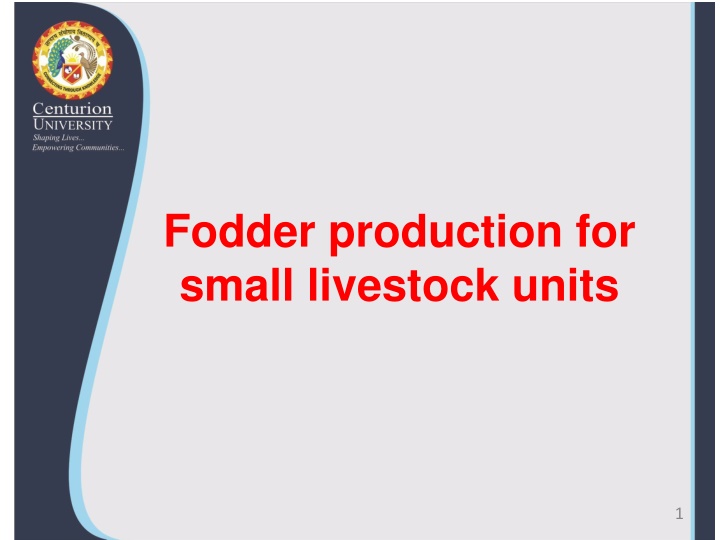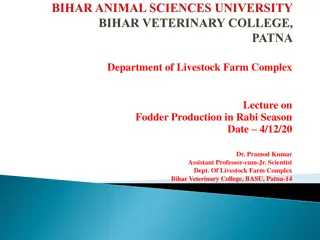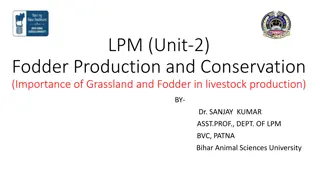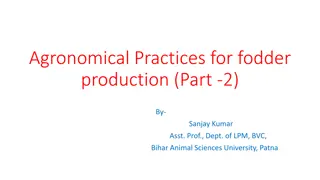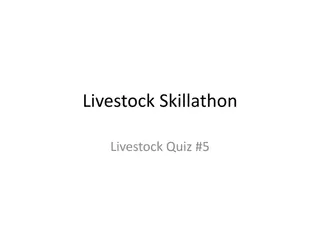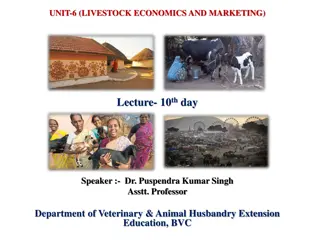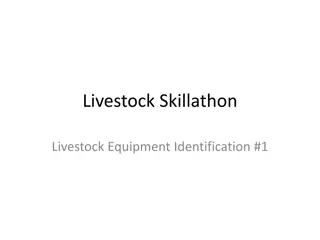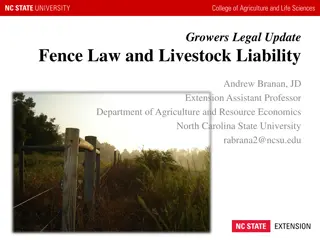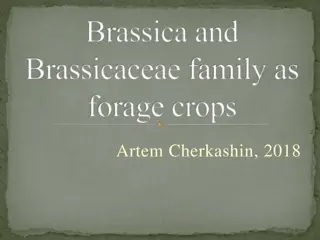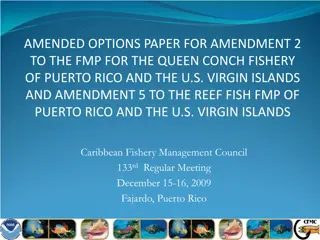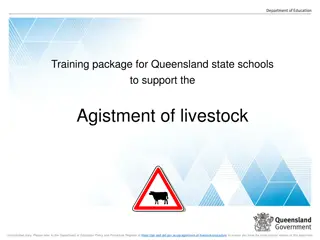Fodder production for small livestock units
Understanding the importance of feeds and fodders in animal production, adopting intercropping and backyard cultivation techniques to increase land productivity, and utilizing rabbits and poultry in traditional farming practices for resource-poor farmers.
Download Presentation

Please find below an Image/Link to download the presentation.
The content on the website is provided AS IS for your information and personal use only. It may not be sold, licensed, or shared on other websites without obtaining consent from the author.If you encounter any issues during the download, it is possible that the publisher has removed the file from their server.
You are allowed to download the files provided on this website for personal or commercial use, subject to the condition that they are used lawfully. All files are the property of their respective owners.
The content on the website is provided AS IS for your information and personal use only. It may not be sold, licensed, or shared on other websites without obtaining consent from the author.
E N D
Presentation Transcript
Fodder production for small livestock units 1
Fodder production for small livestock units Introduction It is very essential to have a basic knowledge about different kinds of feeds and fodders used for raising different categories of animals for maximum production a about 60% of the total expenditure incurred on animals for production is spent on their feeding alone. 2
Fodder Production for small Units through Intercropping or Backyard Cultivation The main aim of inter-cropping or backyard cultivation is to maximize production per unit of land and per unit of time by taking more than two crops from the same piece of land in a year using high yielding varieties and improved agricultural technology for small and marginal farmers in making the maximum productive use of their small land holding. 3
Inter-cropping is growing two or more crops simultaneously on the same piece of land with a definite row pattern. It is of two types: a. Mixed intercropping: Growing two or more crops simultaneously in the same plot with no distinct row arrangement. b. Mixed row intercropping: Growing two or more crops simultaneously in the same plot within a distinct row arrangement. 4
Backyard Cultivation: It is highly suitable for landless poor farmers. On small scale family farms rabbits and poultry can be strongly in into traditional farming practices. This entails the recycling of garden or food refuse to rabbits or poultry and their manure into compost for exhausting soil fertility. 5
This integrated approach is an effective system and is a boon to resource poor farmers, weeds, tropical forages, can be used a feed for rabbits and poultry. Resource poor farmers have to be encouraged to adopt backyard cultivation and to rear rabbit and poultry to produce meat from for forages in a shorter duration with of economic status too. 6
Structures for Storage of Feeds and Fodders 7
Structures for Storage of Feeds and Fodders Storage of grains: The important of grain storage a part of the marketing, distribution and food security system is well recognized. During recent years, as a result of privatization and liberalization of trade, the organization and management of grain storage has changed in many developing countries. 8
Grain storage principles: High temperature and high moisture affect grain quality in storage and cause rapid decline in germination, colour, oil composition, and many other characteristics. Insects and fungus impair the quality of grains directly by their feeding and development, and indirectly by generating heat and moisture. High development of insects and moulds. temperature and moisture favors Insects cannot develop at temperatures below 10 C and moisture below 9% in cereals. 9
Design of Stores: Building for the storage of feeds and feed ingredients must be water tight. The roof walls, doors, windows and floor must be leak proof. The floor must not transmit water vapour from the soil. Door, windows should be sealable in order to permit control of ventilation. 10
Contd.. Building must have devices to protect against the entry of rats and mice and birds (gaps between roof and walls should be sealed with local mud, sheet metal or close netting). Pipe, shafts, ducts etc, should be fitted with wide metal guards outside and netting inside. 11
Essential product: criteria for safe storage of Entirely weather proof. Gas tight to enable fumigation of entire contents. Fitted with controllable ventilation. Proof against entry of rodents and birds. Free from light transmitting area in the roof in order to avoid high temperature area on top of stored produce. Designed to permit incorporation of few fans in the walls and ducting on the floor for special storage requirement. 12
Thank You 13
